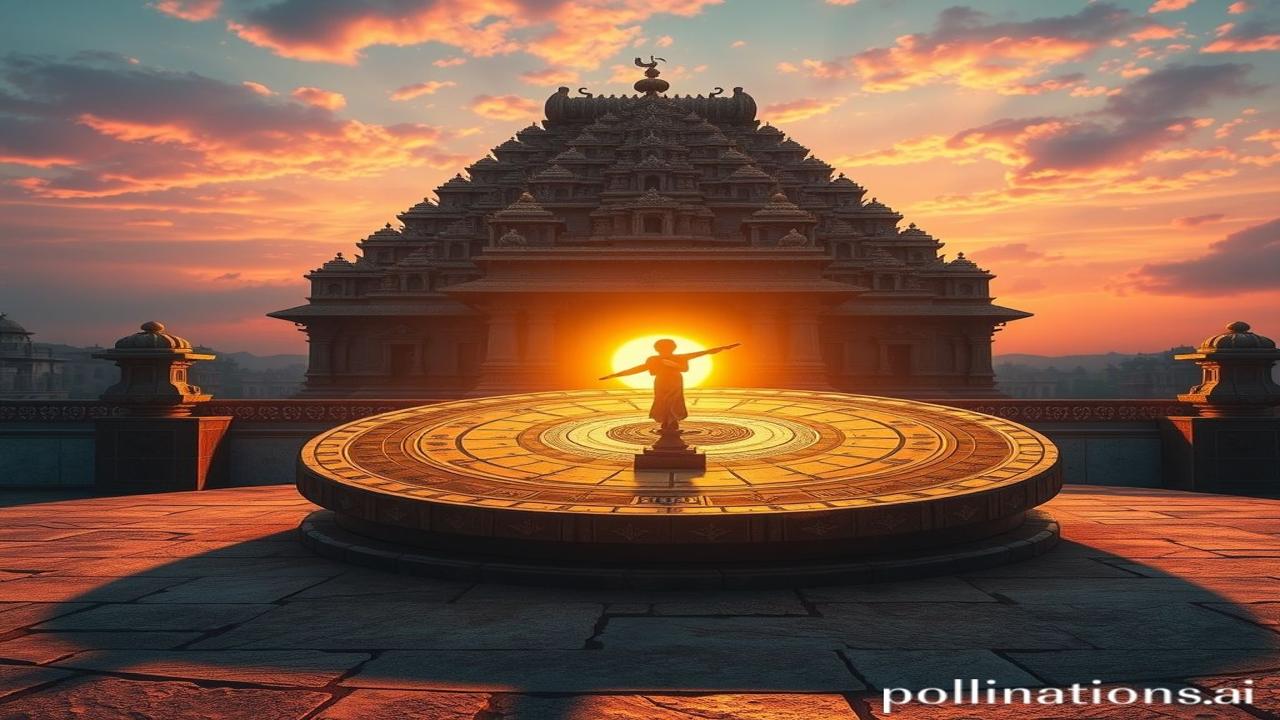Waqt Ka Chhaya: Unraveling Ancient India’s Timekeeping Secrets
Kabhi socha hai, chandrama ki thandi roshni mein lipte, humare purvaj waqt ko kaise dekhte the? The way we measure time today – seconds, minutes, hours – it seems so… mechanical, right? But in ancient India, time was woven into the fabric of life, a dance of nature, rituals, and cosmic understanding. Let’s step back in time and uncover the secrets of how our ancestors perceived and measured this elusive entity we call “waqt.”
प्रागैतिहासिक भारत में समय का महत्व / The Significance of Time in Prehistoric India
So, what’s the deal with ancient Indian timekeeping? It wasn’t just about knowing when to plant crops or perform rituals (though those were important!). It was about understanding the rhythm of the universe, the dance of Shiva and Shakti, the ebb and flow of Dharma. This understanding of time, called kaal (काल), was woven into their cosmology, philosophy, and everyday life. This originated way back in the Vedic period (around 1500-500 BCE) and continued evolving through the Maurya, Gupta, and medieval periods.
The importance of this understanding can be seen in the development of sophisticated astronomical systems described in texts like the Surya Siddhanta and Aryabhatiya. These weren’t just abstract theories; they had practical applications for agriculture, navigation, and even the construction of temples. Think about it, the precision needed to align a temple to the sun on a specific solstice! It’s truly mind-blowing.
ज़मीनी सच – लोग और जीवन / Life’s Tapestry: Weaving Time into Everyday Existence
Imagine a farmer, kisann, getting up before sunrise. He wouldn’t be checking his phone for the weather forecast! Instead, he’d look at the sky, observe the position of the stars, and listen to the calls of the birds. He knew, from generations of passed-down wisdom, the optimal time to sow his seeds, guided by the Nakshatras (नक्षत्र) – the lunar constellations.
Or picture a priest, pujari, chanting mantras in a dimly lit temple. His timing had to be precise, aligned with the movement of planets, to ensure the rituals were effective and blessed by the gods. Ma Rukmini ne subah jaldi uth kar mandir mein puja ki, jahan shankh ki dhvani aur ghantiyon ki awaaz waqt ki pavitrata ko darsha rahi thi.
Even rulers and warriors relied on accurate timekeeping. Astrologers were consulted to determine auspicious times for battles, coronations, and important decisions. Think of the epic Mahabharata war – the timing of the battle was carefully considered based on astrological calculations. This wasn’t mere superstition; it reflected a deep-rooted belief in the interconnectedness of all things.
धरोहर और पहचान / Echoes of the Past: Timekeeping in Modern India
Today, you might think that ancient Indian timekeeping is just a thing of the past. But look closer! We see its presence everywhere. The Hindu calendar, still widely used, is based on the lunisolar system developed thousands of years ago. Festivals like Diwali, Holi, and Raksha Bandhan are all determined by these ancient calculations.
Even the architecture of our temples and monuments reflects an understanding of celestial alignments. The Jantar Mantar in Delhi, Jaipur, Ujjain, Varanasi and Mathura, built by Maharaja Jai Singh II, are a testament to the advanced astronomical knowledge of our ancestors. They weren’t just building beautiful structures; they were building instruments to understand the cosmos. This connection to Bharatiyata, to our roots, is something to be cherished and celebrated.
मजेदार तथ्य या भ्रम-भंजक / Fun Fact!
Many people think that ancient Indians only used the lunar calendar. But the truth is, they were well aware of the solar year and its importance for agriculture. They developed sophisticated systems to reconcile the lunar and solar cycles, creating a lunisolar calendar that was both accurate and practical. Another fun fact is that ancient Indians had words for time intervals as small as a nimisha, which is about the blink of an eye!
दृश्य और भावनाएं / Sensory Symphony: Bringing Ancient India to Life
Imagine standing in the courtyard of an ancient temple. The air is thick with the scent of incense and sandalwood. The sounds of chanting and the rhythmic beat of drums fill the air. You can feel the coolness of the stone floor beneath your feet. Above, the sky is ablaze with stars, a reminder of the vastness of the universe and the endless flow of time. Woh purani mandir ki deewar ab bhi waqt ke jakhmon ko chhupaye hai, lekin uski har eent mein itihas ki kahani hai.
अंतिम विचार या उद्धरण / A Final Thought: The Enduring Legacy
Ancient Indian timekeeping was more than just a system of measurement; it was a way of life, a reflection of a deep understanding of the interconnectedness of all things. As the ancient saying goes: “Kaalo jagat bhakshakah” (कालो जगत् भक्षकः) – Time is the devourer of the universe. It reminds us that time is a powerful force, both destructive and creative, and that we must strive to live in harmony with its rhythm.
